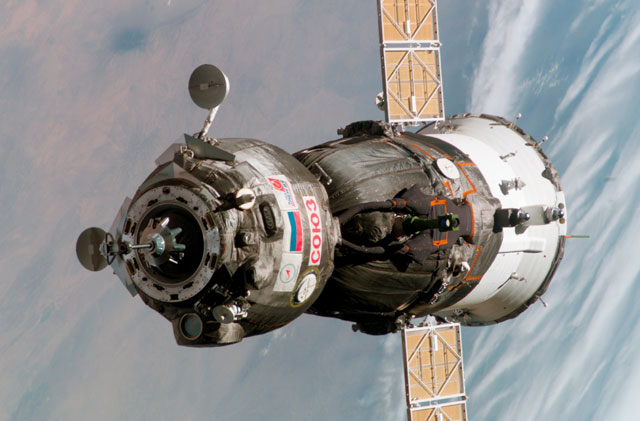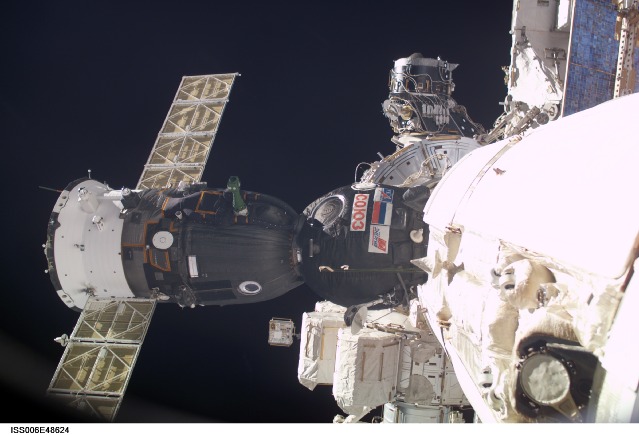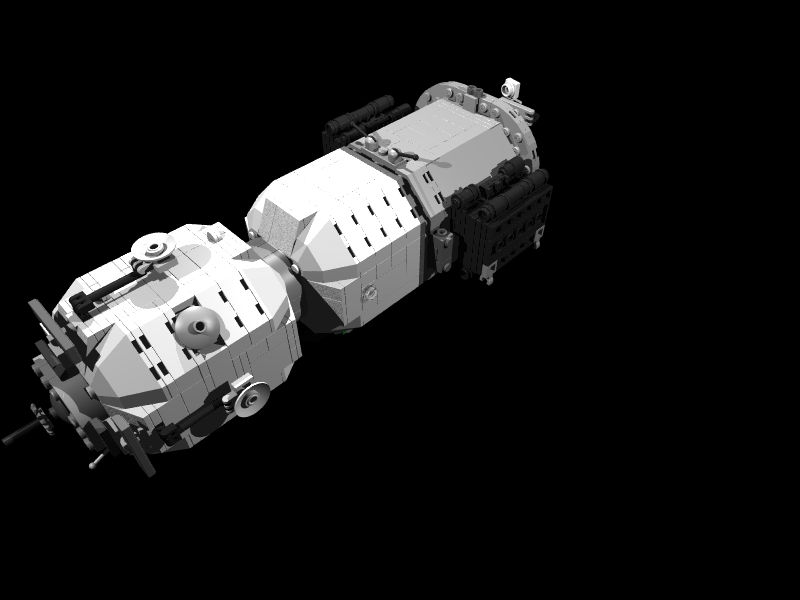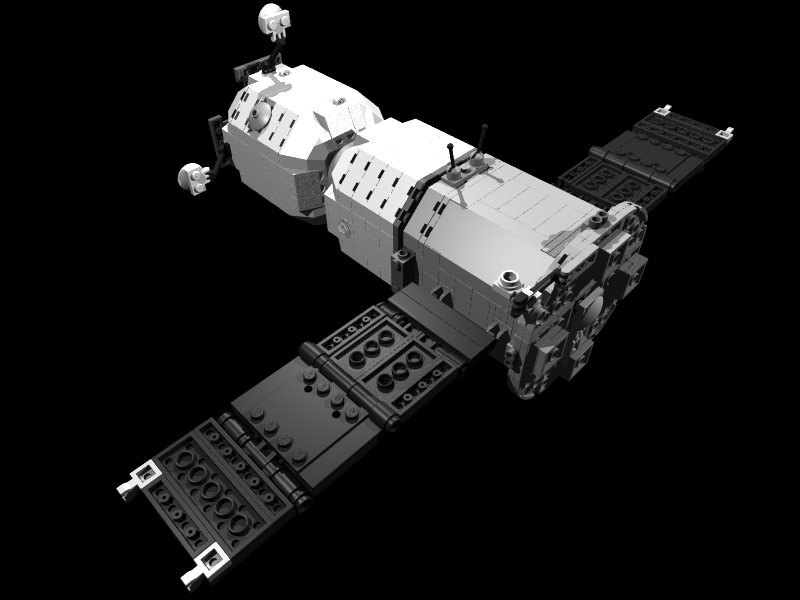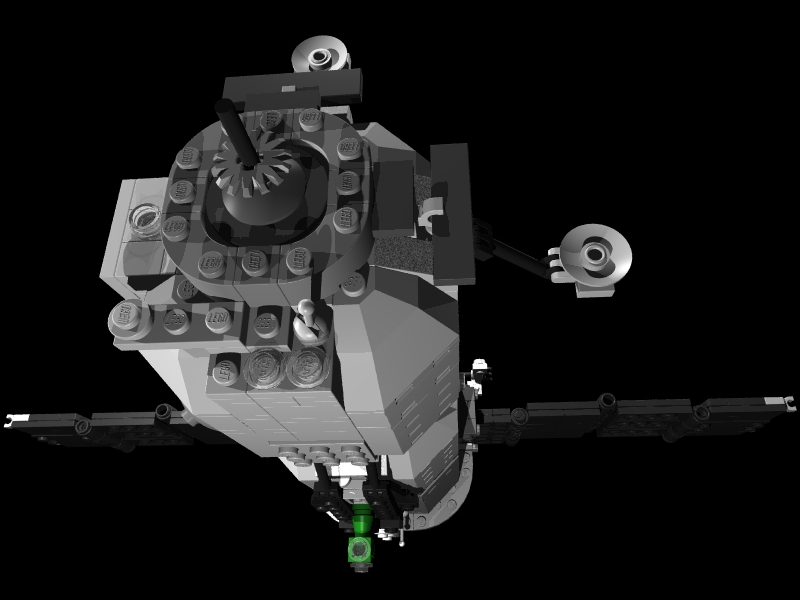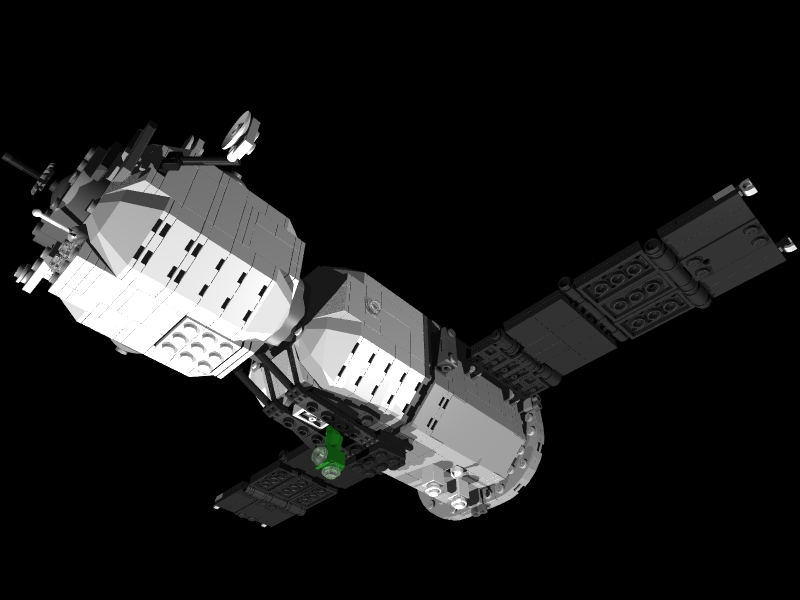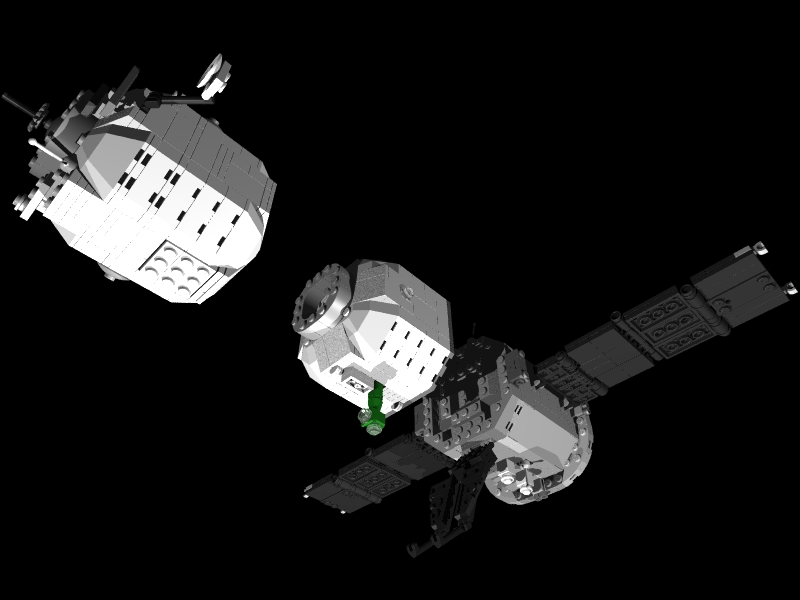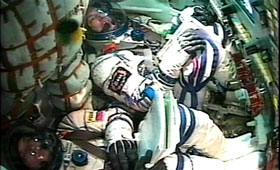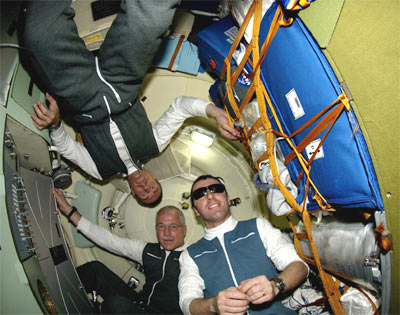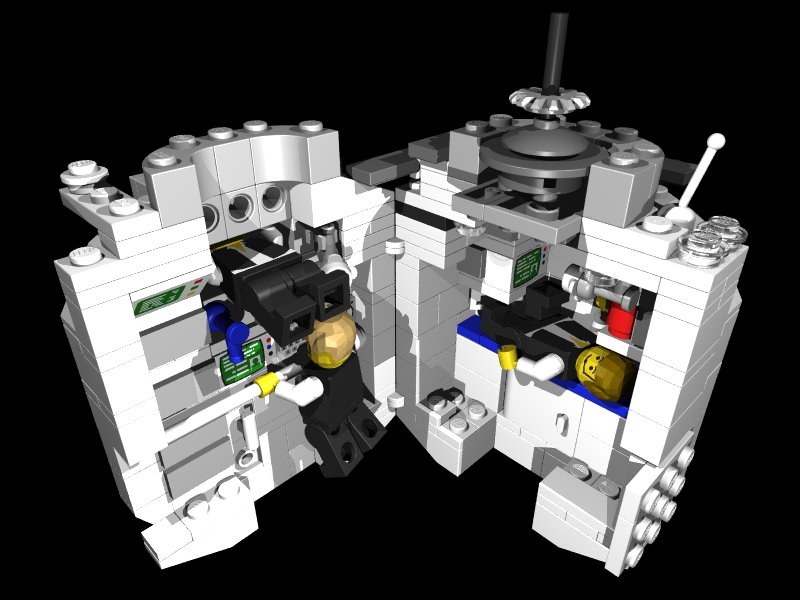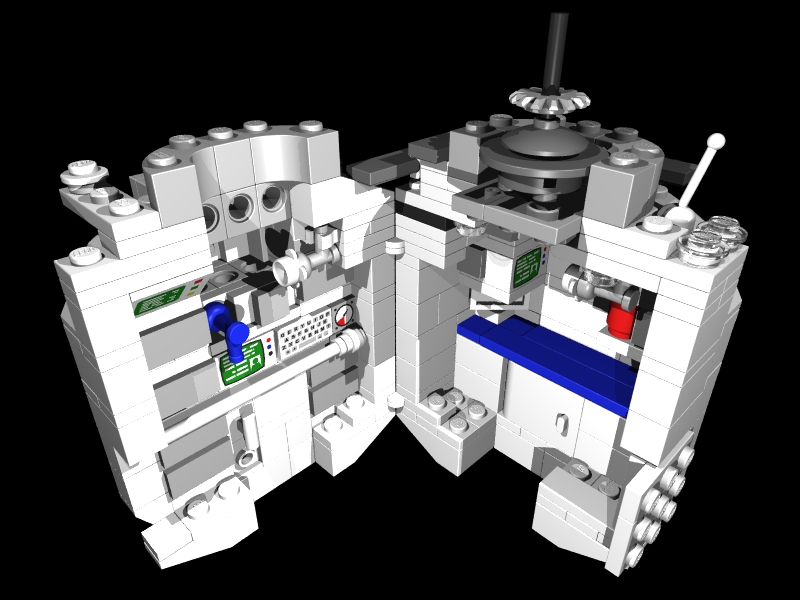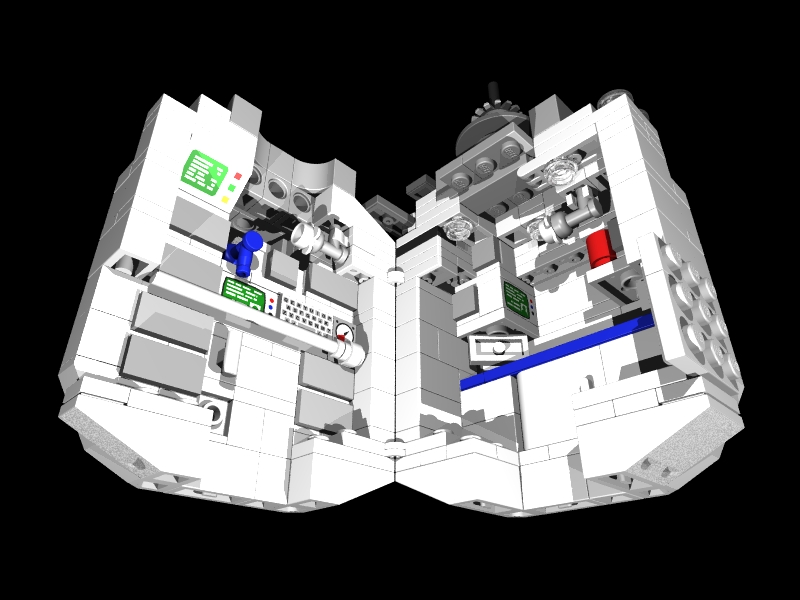The Soyuz TMA is the latest in a long line of Soviet/Russian manned spaceships. Its name means "Union" in Russian, and refers both to its three-part construction and to the U in USSR. Originally developed for the Russian moon race, the capsule holds up to three cosmonauts. After the moon program was cancelled, modified Soyuz orbiters were used for science missions and to support early Soviet space stations. By the time the great Mir station was operational, the Soyuz was making constant flights to rotate crews and brings supplies. An unmanned variant, the Progress (same word in English and Russian), was developed as a cargo ship for Mir. Today, the Soyuz remains the most common vehicle used for the International Space Station. Following the Columbia tragedy, the Soyuz has become the space station's only reliable link to the Earth.
The Soyuz is cheap and reliable. Fifteen Soyuz vehicles could place 45 passengers in orbit for the cost of a single seven-man shuttle flight, and keep them there for approximately the same two-week period. Its safety record is equivilant to the shuttle's (two fatal disasters), though the Soyuz has been flying for a much longer period of time.
Though it was designed for the same purpose as the American Apollo spacecraft and at the same time, the Soyuz is different in many ways. First, it is smaller, lighter, and far less expensive. Visually, the difference is dramatic. While the Apollo consists of a small capsule sitting atop a large service module, the Soyuz sandwiches its capsule between a service module and an orbital habitation module, both the same size as the capsule. These are both discarded before the tiny reentry capsule returns to Earth. The Soyuz's success has not gone unnoticed; rather,it is becoming something of an international spacecraft. International crews regularly travel aboard it to the ISS. In fact, with its shuttles in trouble, NASA has begun negotiations to purchase Soyuz flights from Russia. China's Shenzhou spacecraft, on the other hand, is strikingly similar to the Soyuz.
The Soyuz TMA is a recent development on the ship. It includes improved systems for safety and comfort on landing, reducing the acceleration felt by the crew and the speed of their impact on landing. It is also designed to hold very tall or very short passengers, as well as a wider weight range.
This Lego version is carefully scaled in proportion with the Lego mini-figure. Four studs of Lego length equate to a meter in real life. The orbiter is modeled inside and out, with the habitable modules opening for play and viewing. Like the real thing, it holds three cosmonauts.

